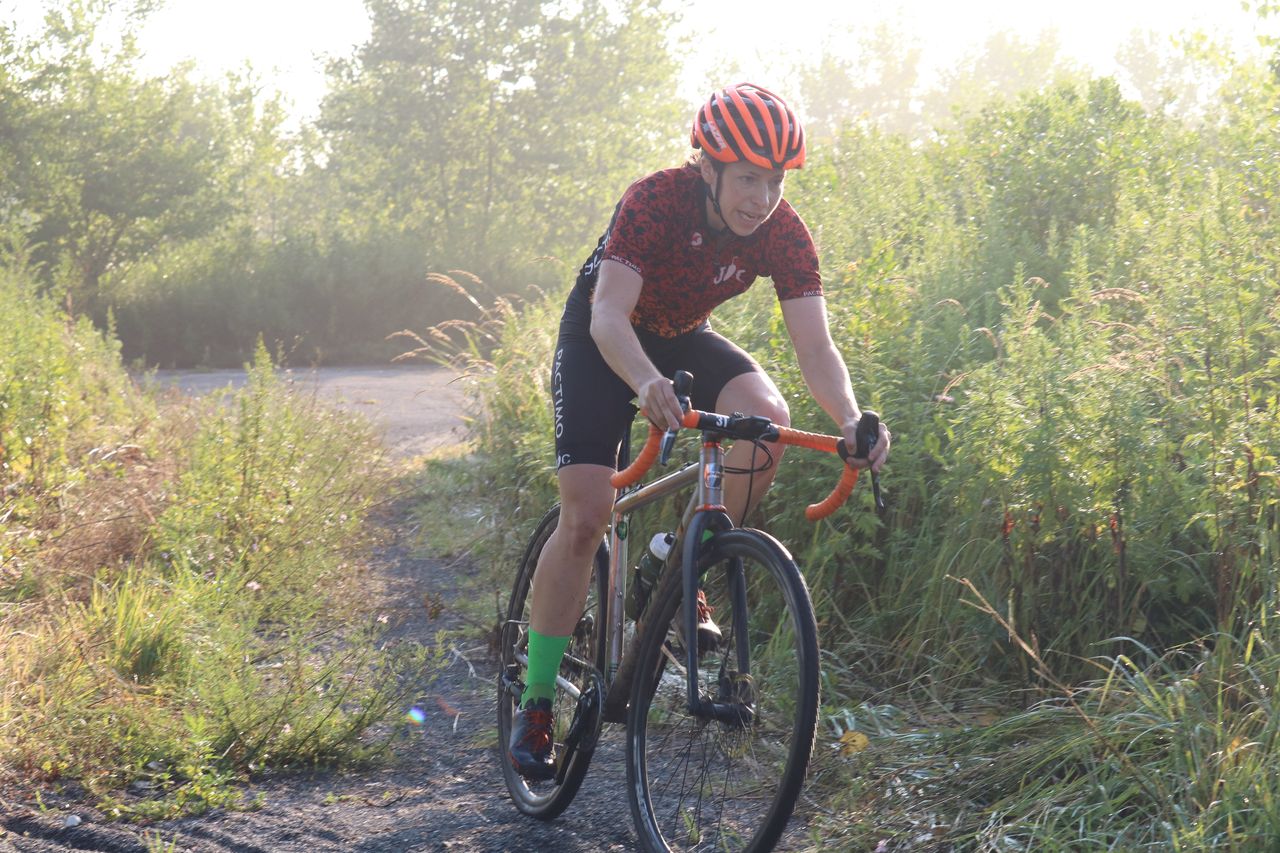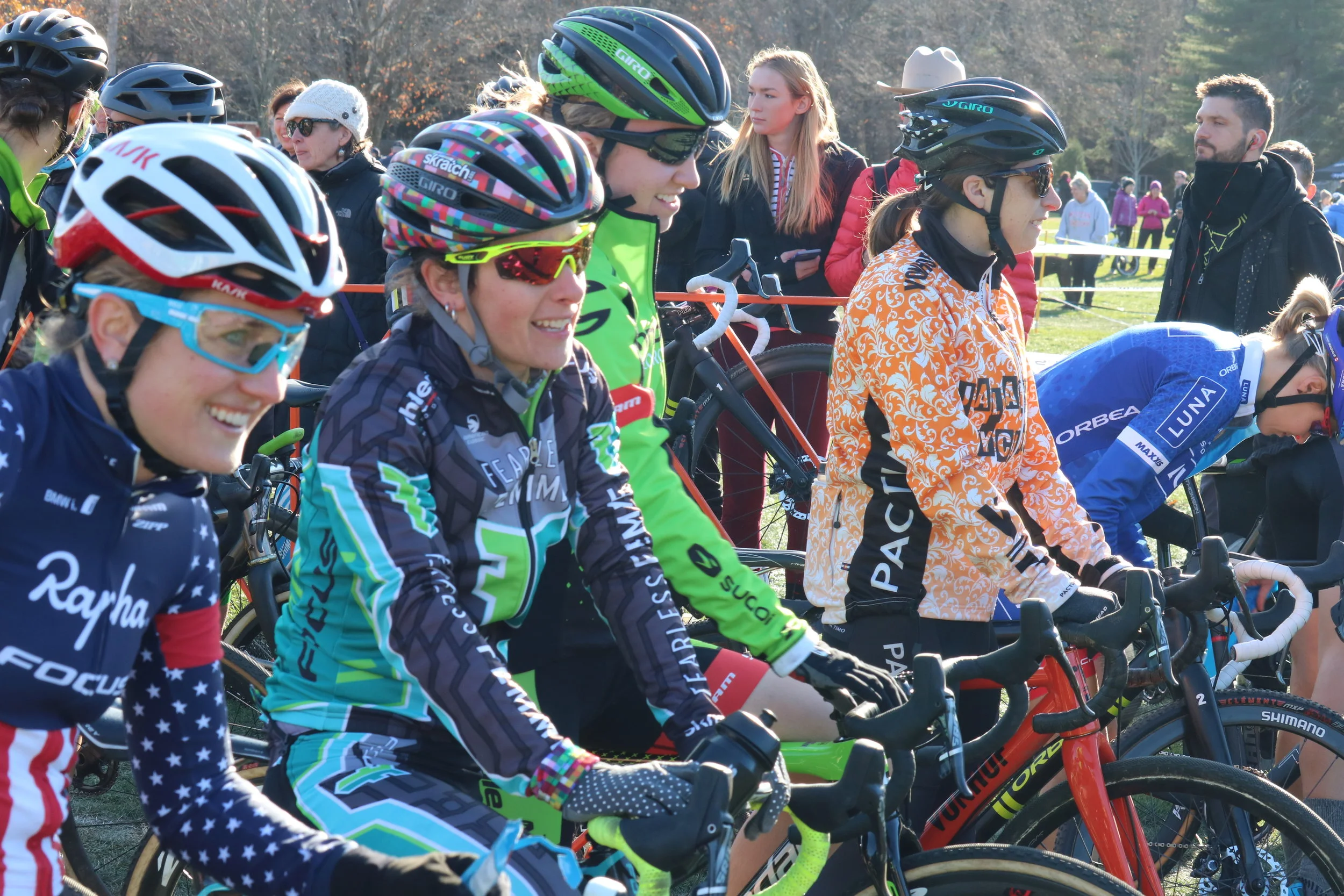Over 15 years ago, my now father-in-law discovered his favorite bourbon from a hole-in-the-wall restaurant in Kentucky (bear with me, this IS an article about cyclocross). At the time, it was practically a no-name brand. He was able to buy it cheap, and almost everyone he could find above the legal drinking age, he talked to about it. He displayed it in his favorite cabinets, and poured a glass of the 23-year-old bottle for whisky-loving guests during the holidays.
About seven years later, some host on the Food Network raved about Pappy Van Winkles, and the Pappy scene exploded across the country. Every hipster bar in the country stocked it, and even empty bottles of the best aged vintage were selling for thousands of dollars on Amazon. Today, my father-in-law may still pull a Pappy from the cabinet on special occasions, but he never raves about it much anymore. The lure and excitement of being in “the know” has faded.
For me, this is a relatable metaphor for cyclocross. For those who are not up to speed: three days ago, Cyclocross Magazine asked Colin Reuter of Cross Results on twitter about the participation of unique cyclocross racers over the last few years. He crunched the numbers, and discovered that with his data set, cyclocross participation has plateaued over the last few years, with 2016 numbers looking a little leaner than 2015 across the nation.
I’m not going to delve too much into the data breakdown. Jls.cx already did an impressive job deciphering some of the state data to find the major trends: cyclocross out west and in the southwest is rapidly deteriorating, and participation is only on the slight rise most everywhere else. (For a quick side note, I think other, smaller factors could be considered. For instance, as I already stated online, I wonder if there are new promoters out there who don’t see the value in sending their race data to cross results. In any case, on the whole, I do think we are not seeing the growth in the sport like we were in 2012.)
Crowds are still big, and Women's participation continues to grow in areas like New England
Two years ago, I interviewed Derek Bouchard Hall, president of USA Cycling, who told me that his goal was to stay hands-off of cyclocross because it was growing at such an astounding rate and that he didn’t want USAC to interfere with that. This approach didn’t exactly pan out. So what’s going on here?
Perhaps we need to step back to the larger picture, to a time beyond Cross Result’s data. I’m probably going to piss off loads of the New England guys who were racing in the 80’s and 90’s (who were the savvy cyclists in the know), but America’s love affair with cyclocross in the modern era intensified when a Texas doper tried the sport out and then showed off some cyclocross skills on route to his second Tour de France “win.” The second explosion arrived out of the Grand Prix, whose organizers were able to bring the UCI World Championships to Kentucky.
Life for the American cyclocross scene was easy. The New York Times was calling our sport the cooler superbowl, races were popping up all across the country, and even the adrenaline-junkie promoting Red Bull company was pumping up the sport through athletes and events.
We went from that regionally exclusive, hidden jem of the cycling world to the scene that everyone wanted to be a part of. Our brand was being displayed in hipster bars all across America, and business was booming.
Now the excitement is no longer in the air. The Kentucky hangover is lingering. Participation isn’t hiking, and you have professional teams like Raleigh-Clement who are angry at the lack of increased American coverage and are threatening to just spend their seasons in Europe on Twitter. Things aren’t in apocalypse mode. We’re not like the situation of Mountain Biking that has seen serious decline in numbers.
Having tough courses are one thing, marketing crash reels are another.
I’m not going to fault Derek Bouchard-Hall’s lack of foresight; I too thought we’d be drinking from a firehose in terms of recruitment for a few more years until we plateaued. But I eventually knew we’d be here. After all, this is a cycling discipline in America, and this country’s widespread respect for cycling athletes died out sometime between 1890 and 1925.
Cyclocross is now the County-Fair Orchid instead of the Chia Pet: we’ll have to actually work at making it grow. I have a few ideas, and I’d like this to be a dialogue, since I don’t have the full picture (after all, I’m not even a race promoter).
1) Market cyclocross as a cheap sport to your friends.
This isn’t something that we have to leave to the industry to do. They won’t. Articles, like the one this week in Bike Rumor, about wisely having 15 different types of tubular treads for every condition, makes it seem like the only way to have fun in cyclocross is with either a deep pocket book or great sponsors. I can’t blame Helen Wyman for writing that article; she’s a sponsored rider, and it’s her job to hype up every Challenge tire imaginable. But this need for the perfect equipment isn’t true in the Elite field, let alone the Cat 4/5 field.
Kate and I spent our first year on cheap mountain bikes, and the next few years on a pair of 7$ Kenda clincher tires (Mo Bruno Roy raced in World Cups on clinchers!). I had a blast in the sport on them, and Kate won a few races and took plenty more podiums. Yes, in the last few years we moved to tubulars, but we share wheelsets, and ride on either file treads or mudders. Is it ideal on course? Not always. Is it ideal on our current bank account? You betcha. Cyclocross Magazine used to do these great cheap bike projects, and they still review pretty inexpensive bikes. Cyclocross can be an insanely affordable sport, (especially if you can lend your old pit bike to your non-cycling friend).
2) Market cyclocross as a safe sport.
I think the KMC Cyclo-Cross festival does a lot right. Providence was amazing, but there is room to grow at other venues. However, like Richard Sachs, I am dead set against that crash reel they posted as a promotion video after their event. In the same way, I get upset any time a promoter goes social crazy with how intimidating their course is. I literally had a promoter tell me via Facebook that he didn’t have enough collar bones broken at his event. That's not a way to design a course for all levels.
So what happened after the KMC promo video? Surprise, surprise, dozens of people I’ve been trying to persuade to get in to the sport tag me in that stupid reel and ask me if the sport is this dangerous. No. I have to explain that these are pro-only sections designed for the top level athletes.
Look, I get it. The marketing works to an extent. You get the adrenaline junkies from all across the country to fly to your race to experience that “wall of death.” That type of marketing reminds me of the Red Hook Crit. The biggest difference is that the Red Hook Crit events are in urban areas with heavy spectator crowds, and that series can scoop up plenty of cash from advertisers that see this crowd attendance. I doubt that cyclocross events in America will gain the same traction unless we start using downtown construction zones as are venues. For now, I think we should still build this up as a participation-based sport, and we won’t get many new cyclists to an event if they think they are going to break their arm their first time racing.
I'm not asking to tame EVERYTHING down. But the marketing can have a little less "wall of death" #hype. And courses that Cat. 4 fields shouldn't be designed to be a perfect replica of Namur.
There is the reason why Triathlons are constantly booming. They are thought of to be a (relatively) safe, personal challenge. The funny thing is that most cyclocross courses provide the same type of environment with a much cooler crowd! Getting new riders to a clinic is a great idea (Kate and I have been putting on free skills and drills sessions all season and pre-season), but also showing your non-cycling friends the tamer events is a great start.
3) Influence that sweet-spot age group.
When Mo Bruno Roy first explained to me the target of the Amy D. Foundation, I understood why the scope was narrow, but I loved the age objective. “It’s not the Juniors we have to worry about, many of them who want to race cyclocross have parents,” she told me, “It’s the right-out-of-college woman who doesn’t have any cash for equipment that we are looking to help out.”
A lot of people on Facebook and in person at the Nats venue have been telling me of their great Junior scene in their area. That’s good. But I also think it’s good if you’re just a future Stephen Hyde bumming around in a 7-11 parking lot on your BMX bike doing tricks at 15. I love that cyclocross is an event you can bring the family to and have an event for everyone, but there is still a nicer target that not everyone is hitting.
One of the biggest exceptions to this is DCCX, and if those races have any indication, I think Washington D.C. will be the next major hub of cyclocross. Go to one of those races of the Super8 series. On the sidelines, you’ll see crowds of people, not cyclists, and many in that sweet spot post-college age.
The Amy D. Foundation’s original target athlete age is perfect, for both men and women. Don’t misread my sentiment, I’m not suggesting to ignore the rad 35-55 aged man or woman in your life. But those post-college students who are finding their feet are also looking to grow their roots, and it would be sweet for those roots to grow in cyclocross.
4) Go to growing festivals and limit diverging series:
While Oregon, Colorado, and California’s decline in cyclocross participation also surprised me, the Texas bell curve held my interest this week. After all, it felt like the Texas participants abandoned their UCI series, and all of their local races looked like they have thinned.
I reached out for thoughts, and received plenty. The great part about Texas is that the number of race series is growing. The bad part is that it seems like the series are working against each other. The Dallas crew rarely goes to Austin, and vice versa. The scene sounds like it has diverged into a series of cliques, and each race doesn’t have the same lively group of hecklers and supporters, making the culture quieter and the promotion more difficult.
Look, I’m all for local races you could ride to; that’s pretty sweet, but I don’t like how there is a North New Jersey, South New York, Western Connecticut, and Eastern Pennsylvania race all on the same day in late September and all an hour from one another.
If you are going to take someone new to a cyclocross event, try and target an established series with a crowd that you know they might enjoy. On the East Coast, we are treated to the Vittoria (formerly Verge), the MAC, the Super 8. When these series do compete, they usually do so because the races involved are five to six hours travel apart from one another, and one is usually the bigger UCI race.
Unfortunately, this can compete with my recommendation number two. Again, I said there are a few things that KMC does right. Their move to creating a festival is an incredible move for cyclocross, and one that Gloucester has made without calling it such. An event with great food vendors, a beverage tent, multiple days, big athletes is a combination to success. I know this isn’t something that just happens one year, but cyclocrossers that can share their love to the next generation have a perfect setting in the number of festivals now coming up on the East Coast.
I’m sure new promoters are going to hate my reasoning, but in reality, there are plenty of weekends where a new race makes more sense. My team was really impressed with the quickly-put-together Rainey Park Cyclocross. It offered a late December race where they could get permits within New York City that might have been much harder to get in warmer weather when everyone is using the park. Plenty of folks showed up, and it wasn’t conflicting with any other races like all of those new late-September races do.
I think the takeaway message here is that cyclocross in America has been, and still is, a grassroots sport. We can’t depend on the bike industry to do the vast majority of our sport’s promoting, because they will convince us that we each need to bring three bikes and five deep dish carbon wheelsets, and make the event feel more like a chore rather than the fun time it can be (yes, I do see the irony in that I have been a member of said industry for a decade). I think the big move to keep expanding the sport is by tapping into those people who are not everyday cyclists, looking to give themselves a challenge and a healthy habit. I feel like it is a mission that some media platforms (like Cyclocross Magazine) have been attempting over the years, and even better still, groups like the PHL Devo Team have lately been employing for road racing and now mountain biking.
Again, these points are not some silver bullets that will return us to the spiking growth of 2011-12. There’s always the possibility that Beyoncé will tweet about cyclocross and we’ll see ourselves overcrowded with growth. But until then, it is a simple matter of working at it, and remembering that cyclocross is still the favorite bourbon.
Jalapeno Cycling is a bike shop, sales, repair and fitness center located in Bloomfield, New Jersey.




